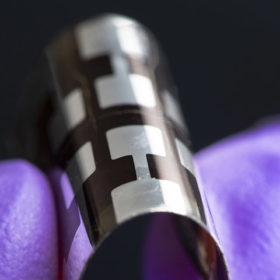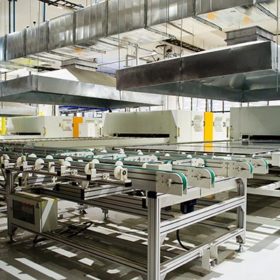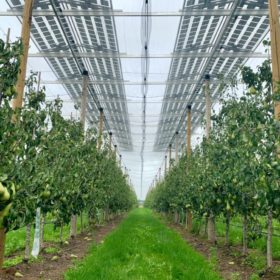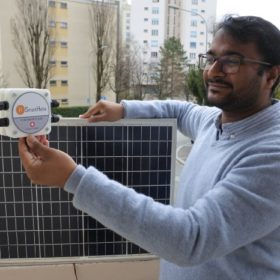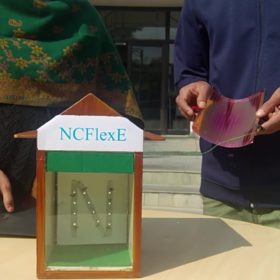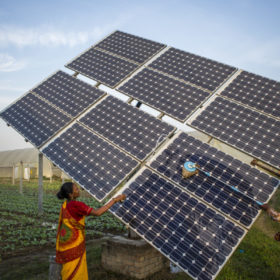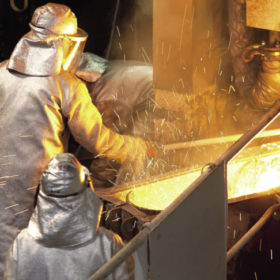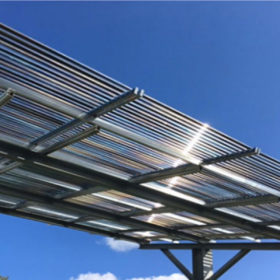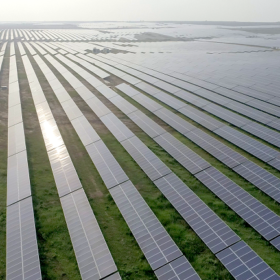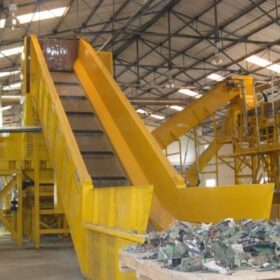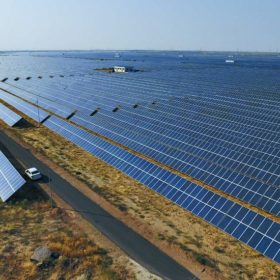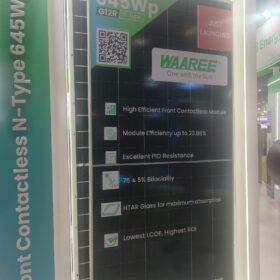Swedish truck maker develops solar cell-clad trailer
The 18-meter long solar cell-clad trailer is said to enable fuel savings of 5-10% in Sweden. Swedish thin-film manufacturer Midsummer is a partner on the project.
NREL scientists build all-perovskite tandem solar cell with 23.1% efficiency
The U.S. based researchers have developed a new wide-bandgap perovskite layer – called Apex Flex – which they claim is able to withstand heat, light, and operational tests, and at the same time provide a reliable and high voltage. With this material, they built tandem solar cells with 23.1% power conversion efficiency on a rigid substrate, and 21.3% on flexible plastic.
India could have 20 GW more solar manufacturing
Power Minister RK Singh has revealed interest from manufacturers in developing more production lines even before incentive schemes being drawn up by the government are taken into account.
Indian solar tenders to incentivize advanced local manufacturing
Policymakers could amend solar auctions to encourage manufacturing as the nation chases an aggressive solar target of 300 GW by 2030.
Agrivoltaics for pear orchards
Belgian researchers are testing agrivoltaic power generation in a pear orchard. The first pilot project features specially designed 185 W solar panels with transparent backsheets, conventional silicon cells, and a 21% efficiency rate.
Indian-led start-up raises Swiss funding for solar diagnostic tool
Swiss-based SmartHelio claims to have witnessed a near 200% jump in demand for its deep-data driven solar asset management solution, which plugs into solar panels or energy storage systems. Sales of the internet-of-things enabled, cloud product have leapt in the last six months.
Organic solar PV cells on paper substrate for indoor use
Researchers at the Indian Institute of Technology Kanpur (IIT Kanpur) have developed 12×12 cm2 (active area 108 cm2) sub-modules from organic solar PV cells on a paper substrate that could be used to power flexible electronic devices under an indoor lighting environment. The modules are said to deliver a power density of up to 12 µW/cm2 under illumination from a 1000-lux cool‐white light-emitting diode.
MNRE invites EoI for installation of innovative solar pumps
The innovators will be required to showcase their technologies in real field conditions. The shortlisted ones will be empanelled and allocated sites to install solar pumps under the Pradhan Mantri Kisan Urja Suraksha evem Utthan Mahabhiyan (PM KUSUM) Scheme.
Government to fund innovations in solar and battery storage waste management
The Department of Science & Technology (DST) under India’s Ministry Of Science & Technology seeks to fund promising R&D projects in solar panel and battery storage waste disposal and recycling. Call for proposals closes on November 15.
Thin-film agrivoltaic solar tubes
German tech company Tube Solar AG has secured €10.8 million to develop its cylindrical agrivoltaic modules. The lightweight devices could also be used on roofs until now considered unsuitable for PV.

